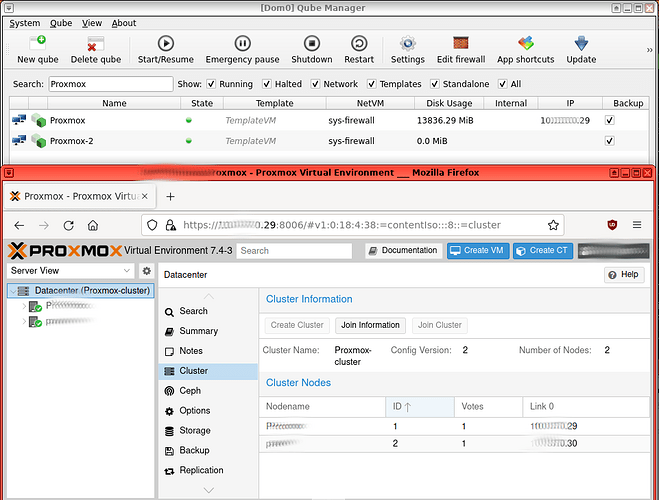One of the reason why I try to make Proxmox works on QubesOS, is so I can create a cluster of Proxmox and can use different functionality that a cluster provide such as HA, migration, ceph, replication …
So more good new as :
I created a second Proxmox called ProxmoxOnQubesOS-2
I can simultaneously run ProxmoxOnQubesOS and ProxmoxOnQubesOS-2 on QubeOS.
I was also able to make both on same communicate to each other so I could in Proxmox create a cluster
On sys-firewall :
sudo iptables -I FORWARD 4 -s 10.137.0.30 -d 10.137.0.29 -j ACCEPT
sudo iptables -I FORWARD 5 -s 10.137.0.29 -d 10.137.0.30 -j ACCEPT
In the screenshoot :
Proxmox = ProxmoxOnQubesOS
Proxmox-2 = ProxmoxOnQubesOS-2
As of now, only Alpine is working for me in proxmox, running alpine in both ProxmoxOnQubesOS and ProxmoxOnQubesOS-2 does work !
Both Proxmox with virtualization on can run simultaneously on QubesOS ![]()
Both Proxmox can run a VM (Alpine) simultaneously on QubesOS ![]()
Both Proxmox can both communicate between each other ![]()
Both Proxmox are in the same cluster ![]()
Need to try next :
Cepth
Migration
Replication
HA
